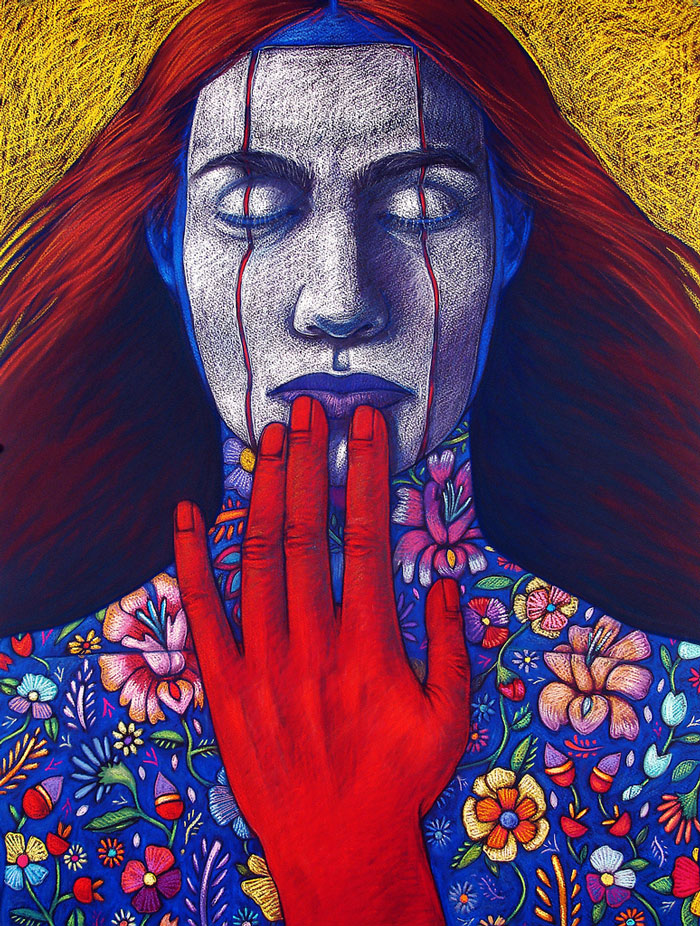Feature photo by Leon Diguet
The National Museum of Mexican Art (NMMA) is known for its genuine and often progressive art exhibits that stem from local, national and international Latino artists. La Nacion Huichol, La Vida Sobre Papel and Cabeza de Barro are three new exhibits that opened on Jan. 21st and add to the already expansive museum repertoire. All three tackle very different themes, however, they’re linked by the honest portrayal of the cultures they emulate.
La Nacion Huichol: from the Sea to the Desert
Exhibition runs through Aug. 7th
La Nacional Huichol, the main exhibit and largest of the three, takes you on a journey through the lives of one of the oldest indigenous tribes of Mexico – the Huichol of Western Sierra Madre. This exhibit narrates the impressive legacy of the artistic and ancestral tribe while raising awareness of the effects of deforestation and strip mining to the Huichol’s way of life. Black and white photographs highlight the history of the people, from helping in the Cristero War to posing for the late Frida Kahlo. Beautifully weaved textiles line the exhibit walls, showcasing the tribe’s talent for craft and commitment to the traditions of their ancestors.
Videos of the tribe’s achievements, samples of the Huichol’s music and actual clothes from the tribe is included in this diverse exhibit. Their presence in Sierra Madre is historic, however, as color photographs and maps show, their population and way of life is being threatened by the modern world. Curators of the exhibit hope that by emphasizing the Huichol’s way of life through the exhibit will aid in the conservation of their land.
La Vida Sobre Papel
Exhibition runs through May 1st
Using the feminine figure with one of the oldest visual techniques—pastels, Hernandez, creates colorful, full-impact drawings that reflect issues of femicide, violence, and the state of Latina women both in the United States and in Mexico. Great, powerful women are displayed in each of Hernandez portraits, however, they’re often accompanied by images of barbed wire, snakes and masks that bring attention to women’s issues of love, surrender and punishment.
In one particular narrative named Adam and Eve, Hernandez uses a luchadora mask to hide Adam and Eve’s identity. In doing so, the traditional story takes on a new meaning, highlighting the love of Eve for Adam that explains their sin was more than temptation. Her use of intricate detail along with traditional and modern images of Mexico brings light to the importance of female issues affecting our world today. The exhibit is strong and powerful, accentuating Hernandez’s talent for combining the imagined with reality.

Cabeza de Barro
Exhibition runs through May 15th
Through the use of clay and mixed media (mostly discarded and recycled materials), artists Nicole Marroquin and Alfonso “Piloto” Nieves create sculptures that express each individual’s perception of the world around them. Issues of overconsumption, wastefulness and violence are exuded through overt and sometimes covert symbolism. References to the Illuminati, Facebook and mainstream media are contrasted with sculptures of tattooed female sailors, nipple-shaped jalapeños (yes, I said nipple-shaped jalapeños) and guns, transforming our views of human anatomy, identity and cultural structures.
The exhibit includes facial sculptures, as well as full constructions of imagined settings, one of which displays a giant-like god sitting upon a toilet polluting the expansive land and sea below him. Each sculpture, small or large, alludes to a greater manifestation of our present-day impact on our land, as well as to our own personal being. Both Marroquin and Nieves hold nothing back as their in-your-face sculptures challenge the perception we have of ourselves, our world and of others.

The National Museum of Mexican Art is located at 1852 W. 19th St., it’s free to the public and is open Tuesday-Sunday, 10 a.m.-5 p.m.